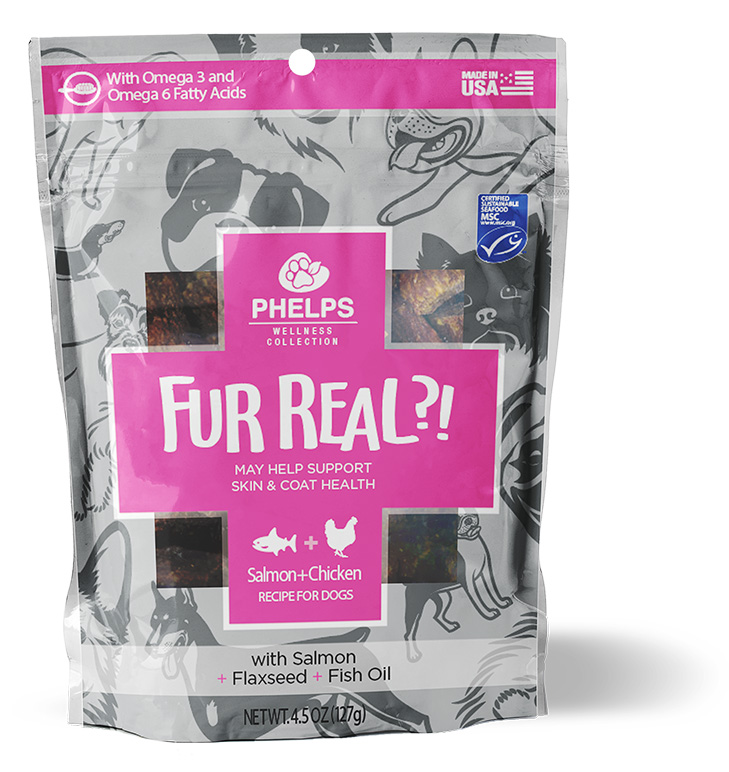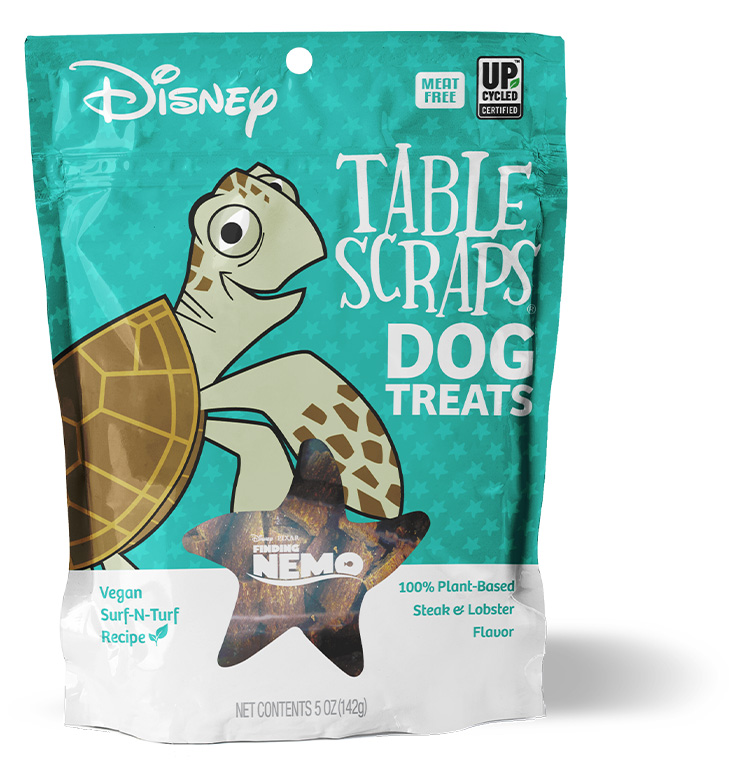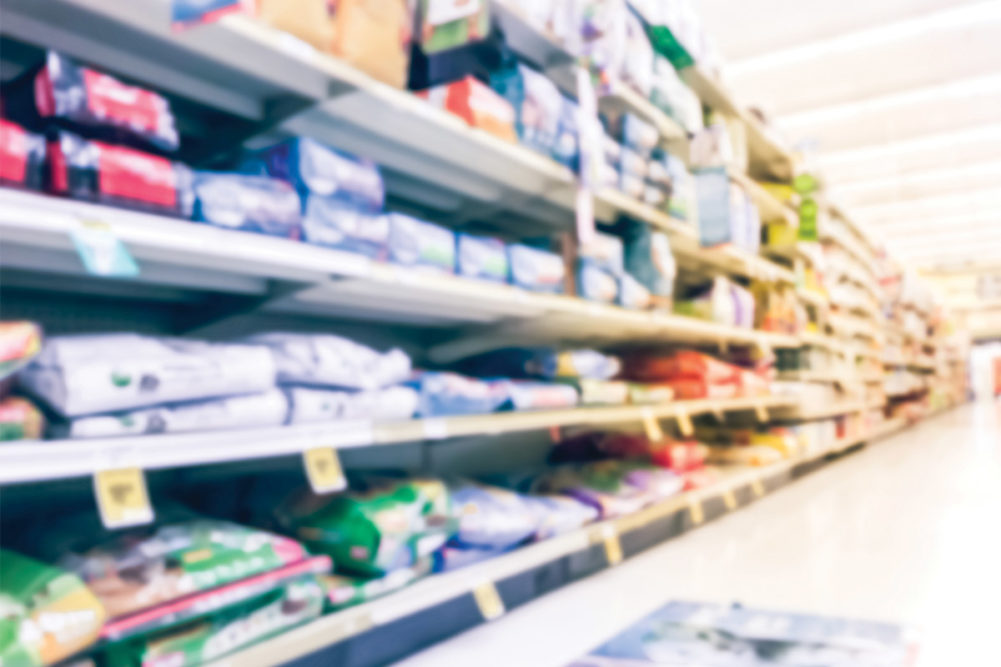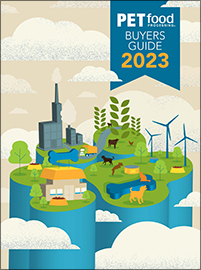This article was published in the May 2023 issue of Pet Food Processing. Read it and other articles from this issue in our May digital edition.
There is only so much space on a pet food package, making it valuable real estate for companies looking to share their story with consumers. At the same time, consumers are demanding more from the products they choose for their pets. Therefore, processors must carefully evaluate their products’ goals when considering what they will choose to communicate.
Keeping it modern
Labeling communication is in the process of becoming clearer thanks to the initiative from the Association of American Feed Control Officials (AAFCO) to modernize pet food labeling. AAFCO began the process in 2015 after research showed pet parents want more transparency and easier-to-understand labeling on products. The goal of the initiative is to create labeling that resembles that on human food products.
“We are used to seeing a common format on human food labels that we purchase at the grocery store,” said Austin Therrell, executive director of AAFCO. “Seeing a similar format on our pet food will hopefully give the consumer a little more clarity in what they are looking at when it comes to nutrition and intended use.”
AAFCO has developed a draft model of the new regulations, and members will vote on whether to accept the new regulations at the annual meeting in August. Therrell said he anticipates the new regulations will pass, and consumers could begin noticing labeling changes in the next five to seven years.

Since pets can’t tell their owners what they want to eat, it’s up to pet parents to decipher pet food labels and purchase products that best suit their companions’ needs.
|The new regulations include the addition of an intended use statement located prominently on the front of the package on the principal display panel. This will indicate if a product is a complete-and-balanced diet offering or if it is designed to be used as a supplement or mixer, differentiations that often confuse consumers.
The guaranteed analysis section will also be replaced with a nutrition facts box that resembles the nutrition facts box on human products, and the box will relate information using household units of measure. There will also be changes to the way many nutrients are displayed, including the introduction of a total carbohydrate guarantee and a dietary fiber guarantee. These indications will more easily allow consumers to see how many calories there are in a cup of the pet food and how many of those calories come from protein, fat and carbohydrates.
This ability to directly compare labels using familiar terms and measurements will aid consumers looking to provide the best nutrition for their pets as they seek to combat pet obesity, said Louise Calderwood, director of regulatory affairs with the American Feed Industry Association (AFIA), Arlington, Va.
The new labels may also include optional graphics that recommend safe handling practices, letting consumers know if a product should be refrigerated or kept separate from human food.
“Our goal as regulators is to make the process of reviewing a pet food label clear and transparent,” said Austin Therrell, executive director of AAFCO.
“Our goal as regulators is to make the process of reviewing a pet food label clear and transparent,” Therrell said. “We want consumers to understand what they are purchasing and to know that there is a level of consumer protection in place.”
Therrell also said consumers sometimes struggle to understand what complex ingredient statements mean and if an ingredient listed is a common or usual name, a scientific name or a vitamin or mineral source. He said it can be challenging with the current rules for consumers to understand the intended use of a product.
“I think the intent of some of these changes to make the information a little more prominently displayed on the label will help clarify some of those challenges,” Therrell said.
Given the likelihood these regulations will be approved, processors should begin preparing now, so they are ready to implement the changes when the time comes.

Interpreting pet food labels can be a daunting task for any shopper. AAFCO hopes to make that process less confusing through its pet food label modernization efforts.
|“The pet food industry is going to have a lot of outreach to do with customers to communicate some of these changes and why they have been made,” Therrell said. “AAFCO worked really closely with industry to make some of these changes, and we also plan to assist where we can to provide resources and educational material to industry and consumers.”
He said this could include videos, flyers, shelf toppers and handouts, as well as webinars.
“The underlying premise of the modernization process was to increase the consumer’s understanding of the labels,” Calderwood said. “That has been the focus right from the start — how to put the labels in a standard format so consumers know what to look for where and then to use messaging and formatting… comparable to human nutrition.”
Human-grade claims are another area consumers find confusing, and these claims require processors to carefully explain their meaning. In the last year, AAFCO has finalized the human-grade guidelines for manufacturers who intend to make such claims. Companies can now participate in a new USDA process verified program and use the USDA logo if their products meet the standard and pass the audit, and this process helps support consumer understanding of human-grade claims, Therrell said.
“There are things we can address through diet, and manufacturers are placing those on labels so consumers can look for those,” said Louise Calderwood, director of regulatory affairs, AFIA.
Supporting animals as they age is another emphasis of the industry that has led to an increase in claims around cognition and joint health. These claims provide another opportunity for consumer education.
“Now that diets are of such quality, our animals are able to age and live so much longer lives,” Calderwood said. “There are things we can address through diet, and manufacturers are placing those on labels so consumers can look for those.”
Additionally, AFIA has been working to help encourage the FDA to modernize its policy around the ability of manufactures to make valid claims. Calderwood said companies should be able to bring claims with proven safety and efficacy to the marketplace and communicate them to consumers.
Telling a sustainability story
In addition to looking to pet food labels to learn about the product’s nutrition, consumers also want to see that the brand they are purchasing — and supporting through that purchase — is operating in a sustainable manner. The agriculture and food industry has seen a lot of development around regenerative agriculture and a move away from industrial farming, which provides processors with another opportunity to communicate through product labels, said Kristen Smith, director of marketing for the Pet Sustainability Coalition, Boulder, Colo.

In an effort to attract potential purchasers, Phelps Wellness Collection packaging features the Certified Sustainable Seafood and Made in the USA icons.
| Source: Phelps Pet ProductsIn addition to educating consumers on sustainability efforts, brands can share information about new ingredients — such as insect proteins and plant-based ingredients — on pet food and treat labels. And as if that wasn’t enough information to fit on a product label, processors might also choose to promote certification programs they follow.
These certifications include Upcycled Certified from the Upcycled Food Association, indicating the use of ingredients that might have otherwise gone to waste. The Upcycled Certified mark removes the educational burden from individual brands and is a tool companies can use to convey transparency, said Angie Crone, chief executive officer of the Upcycled Food Association. The agency works with Where Food Comes From, an independent third-party certifying body, to administer the standard’s verification process, Crone added.
Phelps Pet Products, Rockford, Ill., markets 10 of its own products, including its Disney Table Scraps and Christmas Bark brands, with the Upcycled Certified mark. In addition, as a co-manufacturer, Phelps produces several other private-label and branded products using upcycled ingredients in the recipes.
“We viewed ‘upcycling’ as the next logical step in the ever-increasing humanization trends seen in the pet market,” said Rick Ruffolo, president and chief executive officer of Phelps Pet Products. “Human food companies like Imperfect Foods and Misfit Market combine nutritious food products with the eco-benefit of reducing food waste in the supply chain — at no additional cost to the consumer… so we interpreted that human trend into the pet market.”
Certification from the Global Animal Partnership is another way to communicate how a company is utilizing sustainability and animal care practices. Plastic Neutral certification from rePurpose Global shows consumers that the company from which they are purchasing is supporting sustainability through its packaging.
Beyond the label
With the growing number of certifications available, processors need to make sure they don’t contribute to consumer fatigue and confusion as their customers seek to understand what all the certifications and claims mean. Smith said one of the best ways for a brand to communicate with consumers about its sustainability commitments is through its website.
“Most brands that are doing broad-scale social and sustainability efforts are going to be willing to share that story on their website and have really transparent documentation of the things they are doing,” Smith said.
Given the range of information companies could share with consumers, Smith said it’s becoming more important than ever for brands to pick and choose what goes on packaging to keep messaging clean and clear.

Phelps Pet Products uses packaging to communicate to consumers that this product uses upcycled ingredients, is meat free and features plant-based flavors.
| Source: Phelps Pet ProductsRuffolo said Phelps Pet Products utilizes a number of communication techniques to educate its consumers. The company includes information about upcycling on its website, engages the industry at trade shows, and reaches out to brands and retailers with which it works to explain the benefits of certain certifications like upcycling.
“If a brand is making false claims or can’t back things, there are a lot of very savvy consumers out there that are going to find it,” Smith said. “If they find there is greenwashing happening or brands making claims they can’t back up, that’s going to get out there via social media.”
Smith warned that companies without a sustainability story to share will fail to connect with the many consumers who are specifically looking for such products.
But despite all the messaging processors want to share with potential customers and the changes on the way to how pet food product labels look, the bottom-line mission of pet food processors remains the same — to take care of four-legged family members through healthy and nutritious food.
“The underlying basis of formulation is the creation of products that meet the needs of animals at all their life stages,” Calderwood said. “That’s always been how foods are manufactured, so I don’t think that’s going to change the underlying processes. That goal is still the same — wholesome nutrition and ingredients for healthy animals. The ability for customers to understand that will be increased.”
Read more about packaging solutions and trends for pet food and treats.




